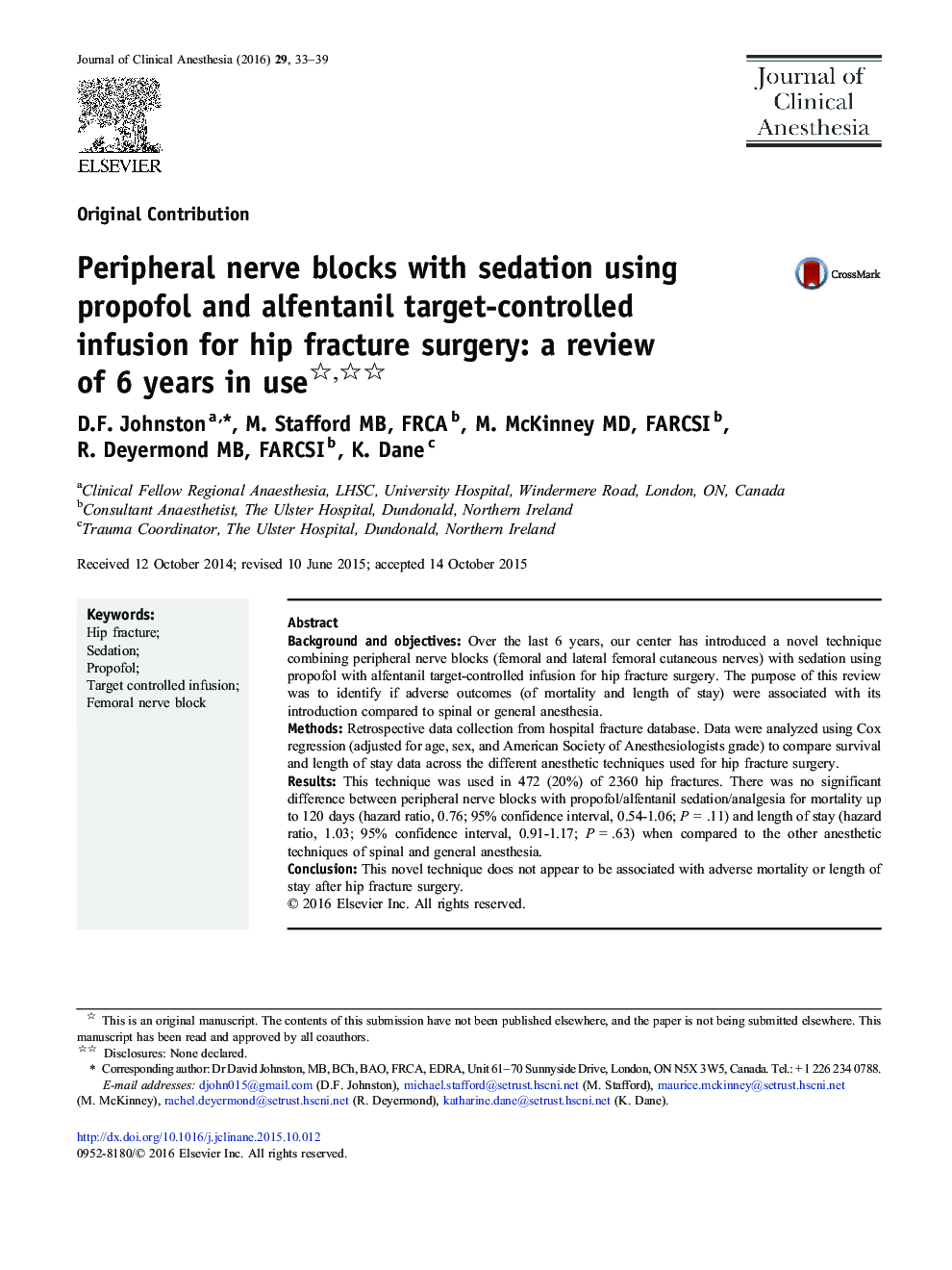| Article ID | Journal | Published Year | Pages | File Type |
|---|---|---|---|---|
| 5884955 | Journal of Clinical Anesthesia | 2016 | 7 Pages |
â¢We describe a novel anesthetic technique for hip fracture surgery.â¢This technique involves peripheral nerve block with sedation.â¢We examine retrospective data of 6 years of its use.â¢We analyzed data to assess if this technique was associated with adverse outcomes.â¢There were no apparent adverse outcomes conferred by this technique.
Background and objectivesOver the last 6 years, our center has introduced a novel technique combining peripheral nerve blocks (femoral and lateral femoral cutaneous nerves) with sedation using propofol with alfentanil target-controlled infusion for hip fracture surgery. The purpose of this review was to identify if adverse outcomes (of mortality and length of stay) were associated with its introduction compared to spinal or general anesthesia.MethodsRetrospective data collection from hospital fracture database. Data were analyzed using Cox regression (adjusted for age, sex, and American Society of Anesthesiologists grade) to compare survival and length of stay data across the different anesthetic techniques used for hip fracture surgery.ResultsThis technique was used in 472 (20%) of 2360 hip fractures. There was no significant difference between peripheral nerve blocks with propofol/alfentanil sedation/analgesia for mortality up to 120Â days (hazard ratio, 0.76; 95% confidence interval, 0.54-1.06; PÂ =Â .11) and length of stay (hazard ratio, 1.03; 95% confidence interval, 0.91-1.17; PÂ =Â .63) when compared to the other anesthetic techniques of spinal and general anesthesia.ConclusionThis novel technique does not appear to be associated with adverse mortality or length of stay after hip fracture surgery.
